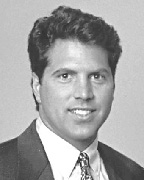For years private country clubs were rather one dimensional, they were typically member-owned, equity clubs that operated on a not-for-profit basis. That was until someone discovered a loop-hole in the tax laws that allowed club owners to sell refundable memberships and avoid paying income tax on the money collected. Club owners also realized that members were willing to pay a big premium if all, or at least a portion of the Initiation Deposit (ID) fee was refundable.
Most of the clubs that opened nationwide in the late 1990s and early 2000 were marketed as refundable non equity for-profit clubs. Those joining were not focused on ownership, but more concerned with the idea of getting a refund upon resignation. Situations change and as people move, or pursue new interests, getting back money that was paid to join a country club was a big selling point.
Most clubs charge a "transfer fee", which can range from 10 to 30%, while some clubs do in fact provide full refunds. In some instances, refunds are based on prevailing rates. This way, departing members could actually make money on the club and share in some of the risk. This technique is sometimes used as an extra incentive to attract members, particularly early in the sell-out process.
Most members don't realize, but refunds are almost always paid out only after multiple members join, that is until the club reaches its stated cap. Most clubs use a 4 in 1 out policy, until the cap is reached and it goes to 1 in 1 out. This rule is also used to protect the member as well, because it prevents a mass exodus, causing hardship for those remaining members.
Because the owner has the ability to alter the membership documents, they are able to increase the cap or create new categories. This can extend the length of time it will take to receive a refund, but the club can benefit from the extra income.
Most clubs start experiencing some member attrition, or turn over within just a few short years. Clearly, by year 5, a club can expect to lose about 5% of its membership. Attrition varies by region, price point, but generally ranges from 3 to 10%. Therefore, it is essential for a club to sell-out within just a few short years, while net absorption is occurring. Unfortunately, as a club takes longer to sell out, and the refund waiting list grows, it becomes more apparent that refunds are unlikely. This can prohibit new members from joining. Particularly since the premium charged for "refundability" is no longer warranted.
To make our point, we spotlight the evolution of a private club in Mass. that opened like so many others in early 2001. It was designed around an upscale residential community, in a desirable town, designed by a name architect and complemented by a large multi purpose clubhouse. Like most clubs, membership sales began even before construction commenced, and before the course was even open, the club had sold almost 150 memberships. This is essential, since a club can lose millions in operation during sell-out. It helps to open with a good membership level. In this example, refundable memberships began at $12,500 and were increased to $15,000.
The club was established with a typical 4 in 1 out policy with a stated cap of 375 members. When the course opened it had 235 members and was priced at $35,000. However, the owner misread demand and upped the initiation fee to $50,000, but the club was unsuccessful in attracting new members, sales came to a halt and for the next several years, membership remained stagnant.
Even after dropping back the price to $35,000, the rate of attrition began to increase. As it became apparent that membership fees were no longer easily "refundable" the club could no longer command a premium in rate. It must now drop rates in order to attract new members, or introduce a new non refundable option. By 2006 there were already 50+ members looking for refunds, which were few and far between. The club dropped fees again, now to $25,000, and introduced a new nonrefundable membership class for $17,500. In most markets, we find nonrefundable fees are about half that of refundable ones. The club is still operating with only 225 members today. This was a result of over estimating demand, pushing price and extending the sell-out so that resignations out paced new membership sales.
This is an important lesson, and one unfortunately many club owners are experiencing currently. Those clubs that were successful were able to sell-out within a short period of time, while the private market was much stronger and options were still limited.
Key lessons to remember are:
* Start pricing low, allow room to increase, reaching stabilization is more critical than ego driven ID's.
* Respond quickly to changes in the market.
* Consider a nonrefundable membership as your resignation list grows and refunds become scarce, while keeping a refundable option available to satisfy existing members hoping for a refund.
* Consider offering higher dues, in lieu of a lower initiation fee option.
Jeffrey Dugas is a principal of Wellspeak Dugas & Kane, LLC., Cheshire, Conn.
Tags:
The evolution of a private country club: Club owners sell refundable memberships
March 26, 2008 - Spotlights









